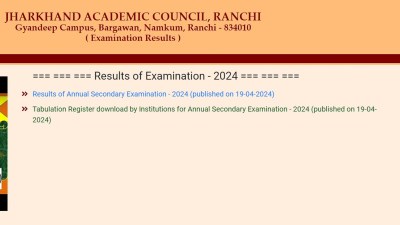- India
- International
Seeing red: why is tomato on fire?
In just over a month, retail prices of tomato have gone from about Rs 20 per kg to Rs 70 per kg (all-India modal average as per Department of Consumer Affairs data), after staying at Rs 10-12/kg through May and early June. Why has this happened?
 ‘Summer tomato’, harvested between May and July, sees bigger investments by farmers who expect better price realisations. (Express Photo/Jaipal Singh)
‘Summer tomato’, harvested between May and July, sees bigger investments by farmers who expect better price realisations. (Express Photo/Jaipal Singh)
In just over a month, retail prices of tomato have gone from about Rs 20 per kg to Rs 70 per kg (all-India modal average as per Department of Consumer Affairs data), after staying at Rs 10-12/kg through May and early June.
Is the current price spiral in tomatoes unusual, even for this time of the year?
Tomatoes do tend to get dearer at this time. The all-India average retail rate at this time last year was Rs 40/kg, and it was Rs 30 the year before. One reason is tapering supplies from the last summer crop; farmers would be planting the next autumn/kharif crop at this time. But even after discounting for the normally low market arrivals now, there is no doubt that ruling rates — in many places, they are in the Rs 90-100 range — are far too high.
So, what’s driving this?
For that, first a little background.
There are two main crops of tomatoes grown in the country.
The first one is what is transplanted from around mid-June in central and southern India (places such as Shivpuri and Sagar in Madhya Pradesh; Nashik in Maharashtra; Madanapalle in Andhra Pradesh; Kolar and Mysore in Karnataka; and Dindigul in Tamil Nadu), mid-July through August in northern India (Jhalawar and the Jaipur-Chomu belt in Rajasthan; Sonbhadra, Varanasi, Lucknow, Bareilly and Agra in Uttar Pradesh), and stretching up to end-September in eastern India (Purulia in West Bengal, Buxar in Bihar and Ranchi in Jharkhand). This is typically a 90-100 day crop that starts yielding fruits 60-70 days after transplantation (the seeds of tomatoes are first sown on nursery beds to raise seedlings that are transplanted in fields after around 25 days), with production happening in “flushes”. There can be 8-10 flushes in any given crop cycle, at intervals of 3-4 days.

The autumn to late-kharif crop is what supplies the market from September onward. This, along with a smaller rabi crop transplanted during October-November, contributes to the familiar low tomato prices through the winter.
Transplanting of the second main crop happens around January-February. This is a longer duration crop of 130-150 days, yielding an average 25 tonnes per acre over 15-20 pickings, as against 15-20 tonnes for the autumn/late-kharif tomato. This “summer tomato” (because it is harvested mostly over May-July) is grown mostly in areas where the maximum temperatures don’t go beyond the mid-to-late thirties range during the flowering and fruiting stages. Such conditions are found mostly in relatively cool or hilly areas such as Madanapalle, Mysore, Kolar, Sangamner and Narayangaon in Maharashtra, or Solan and Mandi in Himachal Pradesh. Farmers cultivating summer tomatoes typically invest Rs 1 lakh-1.5 lakh per acre in irrigation, staking (tying the plants to supporting rods to prevent them from falling), nutrients, pesticides and other inputs, as against Rs 50,000-75,000 for the regular autumn/kharif crop. They do this in expectation of better price realisations during the summer months.
 Source: National Horticultural Research & Development Foundation, New Delhi
Source: National Horticultural Research & Development Foundation, New Delhi
But how is this linked to our main topic of discussion?
It is, simply for the fact that producer realisations were low this time right from November to May. Prices in major produce markets such as Madanapalle, Kolar and Sangamner did not cross single digits till early- or even mid-May. The main reason for this was demonetisation, which came on top of a bumper autumn/kharif crop thanks to a good monsoon. Consumers began noticing tomato prices when they started rising towards end-June — they did not notice it when farmers were seeing red at the prices they were realising throughout the previous seven months or more. In many cases, farmers stopped applying fertiliser or maintaining their summer tomato crop after the first and second pickings. The cheap tomatoes consumers got during peak summer this year — which was no less unusual — was obviously at their expense. But we are now paying the price of that.
How is that?
As already pointed out, the 2016 autumn/kharif tomato crop was a bumper one. That, along with the government’s November 8 decision to scrap Rs 500 and Rs 1,000 notes, led to prices crashing to Rs 3-4 per kg levels during November-December, which was a fraction of what they realised in the same period of the previous year (see graph left). Farmers, therefore, were inclined to plant less of the summer tomato this time. The ones who did, hoping for prices to recover at least by summer, were to be disappointed. They practically terminated their crop, the impact of which is being felt now. Prices have, indeed, recovered — partly also because of supply disruptions induced by the rains. But the farmers clearly aren’t the ones making merry.
What does the future portend?
According to Shishir Srivastava, technical manager (vegetables) at Monsanto India, a leading hybrid vegetable seeds supplier, tomato plantings in the current kharif season have so far been 35-40 per cent lower relative to last year. While high prices could still induce plantings, the fact is the nursery sowing time is over in many areas. If the autumn/kharif crop, too, turns out lower, we may not see any significant cooling of prices in the immediate period. But in the meantime, one can take comfort from potato and onion prices, which are not on fire — at least for now.
More Explained
EXPRESS OPINION
Apr 19: Latest News
- 01
- 02
- 03
- 04
- 05








































